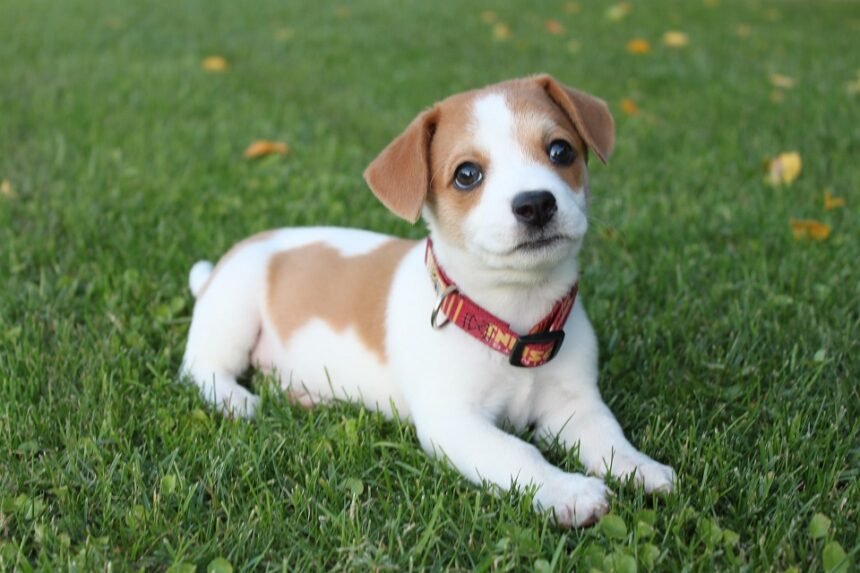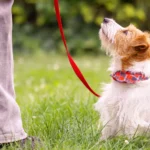Getting a New Puppy is an exciting and heartwarming experience. The joy of introducing a furry friend into your life is immeasurable; however, it also comes with a set of responsibilities. To ensure a smooth and comfortable transition for your new pet, it’s essential to be well-prepared with the right supplies and knowledge. In this article, we’ll guide you through a comprehensive checklist of must-haves, along with offering valuable tips to aid you in making the journey of raising a puppy even more fulfilling.
Essentials Puppy Items
Welcoming a new puppy into your home is an exciting adventure, and ensuring you have the right essentials on hand is paramount. Gathering the necessary items beforehand will help ease the transition for both you and your furry friend. Some key items include:
- Collar and Leash: These are essential for walks and outdoor adventures. Opt for an adjustable collar that accommodates your puppy’s growth.
- Food and Water Bowls: Choose sturdy, non-tip bowls that are easy to clean and appropriate for your puppy’s size.
- Quality Puppy Food: Providing a balanced and nutritious diet is crucial for their growth and development. Consult your veterinarian to determine the best food for specific breed and age.
- Bed or Crate: A comfortable bed or crate serves as your puppy’s safe haven, a place where they can retreat for rest and relaxation.
- Chew Toys: Puppies explore the world through their mouths, and providing appropriate chew toys helps prevent destructive chewing and keeps them engaged.
- Grooming Supplies: Basic grooming tools like a brush, nail clippers, and puppy-friendly shampoo will keep your pup clean and healthy.
- Identification Tag: Ensure your puppy wears an ID tag with your contact information in case they ever get lost.
Creating a Safe Environment
Just like a human baby, a puppy requires a safe environment to thrive. Puppy-proofing your living space is a crucial step in ensuring their safety and well-being. Here’s how:
- Remove Hazards: Puppies are naturally curious and can get into trouble. Remove small objects, toxic plants, electrical cords, and any items that could pose a choking or safety hazard.
- Containment: Consider using baby gates to restrict access to certain areas of your home. This is particularly useful during the initial stages of training.
- Puppy-Proofing Rooms: Designate a specific area or room for your puppy to explore. Remove any items that could be harmful or easily damaged.
- Secure Trash Cans: Puppies love to investigate and may be drawn to trash cans. Use ones with secure lids to prevent them from getting into potentially harmful garbage.
Feeding Your Puppy the Right Food
Proper nutrition is the foundation of growth and well-being. Providing the right food in the right amounts is essential for their development:
- Consult Your Veterinarian: Seek advice from your veterinarian to determine the appropriate type of food and feeding schedule for your puppy’s breed, age, and specific dietary needs.
- Choose High-Quality Puppy Food: Opt for a puppy-specific formula that offers the right balance of nutrients, including proteins, fats, carbohydrates, vitamins, and minerals.
- Portion Control: Follow the feeding guidelines provided on the food packaging. Be mindful of portion sizes to prevent overfeeding, which could lead to obesity.
- Scheduled Meals: Establish a consistent feeding schedule to regulate your puppy’s digestion and potty training routine.
- Hydration: Always have fresh water available for your puppy. Hydration is essential for overall health and well-being.
Home Puppy Grooming
Maintaining your hygiene through regular grooming not only keeps them looking their best but also promotes their overall health and comfort. Here’s how to approach home puppy grooming:
- Brushing: Depending on your puppy’s coat type, regular brushing helps prevent matting, removes loose fur, and promotes healthy skin.
- Bathing: Use a mild, dog-specific shampoo and bathe your puppy as needed. Avoid over-bathing, as it can strip their skin of natural oils.
- Nail Trimming: Regular nail trims prevent discomfort and potential injuries. Be cautious not to trim too close to the quick, which can cause bleeding.
- Ear Cleaning: Gently clean your puppy’s ears with a veterinarian-approved solution to prevent wax buildup and infections.
- Teeth Care: Start introducing teeth brushing early with a puppy-specific toothbrush and toothpaste. Good oral hygiene is essential for their long-term health.
Health Care Essentials
Maintaining your puppy’s health involves more than just grooming. Regular veterinary care ensures that your puppy receives the necessary vaccinations, preventive treatments, and medical attention. Here’s what you should consider:
- Vaccinations: Follow your veterinarian’s recommended vaccination schedule to protect your puppy from common and potentially serious diseases.
- Parasite Control: Administer flea, tick, and heartworm preventives as recommended by your vet to keep your puppy free from parasites.
- Regular Check-ups: Schedule routine veterinary appointments to monitor your puppy’s growth, development, and overall health.
- Emergency Preparedness: Have a list of emergency numbers, including your veterinarian’s contact information, in case of unexpected health issues.
By taking a proactive approach to grooming requirements and consistently prioritizing your puppy’s healthcare with regular veterinary check-ups, you are laying the groundwork for their lifelong well-being. It’s important to keep in mind that grooming and healthcare routines also present precious chances for you to strengthen the bond between you and your pet.
Simple Puppy Training Techniques
Effective training sets the stage for a well-mannered and socially adept adult dog. Early training helps establish positive behaviors and prevents future challenges. Here are some fundamental training techniques to start with:
- Basic Commands: Teach your basic commands like “sit,” “stay,” “down,” and “come.” Use positive reinforcement, such as treats and praise, to reward good behavior.
- Crate Training: Introduce your puppy to their crate as a safe and comfortable space. This aids in potty training and provides a secure area when you’re not around.
- Potty Training: Establish a routine for bathroom breaks and praise your puppy when they eliminate in the appropriate spot.
- Socialization: Expose your puppy to various people, animals, environments, and stimuli to build their confidence and help them become well-adjusted adults.
- Leash Training: Teach your puppy to walk on a leash without pulling. Gradually introduce them to different walking environments.
Consistency, patience, and positive reinforcement are key when training your puppy. Celebrate their successes and remain patient during setbacks – they are learning and growing with each interaction.
Playtime and Exercise Ideas to Keep Your Puppy Active
Puppies are full of energy and curiosity, making playtime and exercise essential for their physical and mental well-being. Engaging activities not only help burn off excess energy but also contribute to a strong bond between you and your puppy:
- Interactive Toys: Provide toys that challenge your puppy’s mind and senses, such as puzzle toys that dispense treats when solved.
- Fetch and Tug-of-War: Games like fetch and tug-of-war provide great opportunities for exercise and interactive play.
- Puppy Playdates: Arrange playdates with other friendly dogs to encourage socialization and healthy play behavior.
- Short Walks: While puppies shouldn’t overexert themselves, short and supervised walks allow them to explore their surroundings and start building good leash manners.
- Training Games: Incorporate training into playtime by practicing commands during play sessions. This reinforces their learning in a fun way.
Remember that puppies have bursts of energy followed by periods of rest. Balance active playtime with nap time to prevent overexertion.
Introducing Your Puppy to the World
Socialization is a vital aspect of raising a well-adjusted puppy. Exposing your puppy to various experiences and environments helps them develop confidence and adaptability:
- Meeting People: Introduce your puppy to different people of varying ages, genders, and appearances. Reward calm behavior around strangers.
- Exploring Different Environments: Gradually expose your puppy to new places, surfaces, and sounds. Start with quieter environments and progress to busier ones.
- Positive Associations: Use treats and praise to create positive associations with new experiences, such as car rides or trips to the vet.
- Other Animals: Allow controlled interactions with other well-behaved dogs and animals to help your puppy learn appropriate social cues.
- Handling and Grooming: Regularly handle your puppy’s paws, ears, and mouth to make grooming and veterinary visits easier in the future.
Early and positive exposure to a variety of stimuli sets the stage for a confident and well-mannered adult dog.
Creating Sleep and Daily Routine
Puppies thrive on routine, as it provides them with predictability and security. Establishing a daily schedule helps regulate their behavior and aids in training:
- Regular Feeding Times: Feed your puppy at consistent times each day, which also helps with potty training.
- Scheduled Walks and Playtime: Plan regular exercise sessions and playtime to prevent restlessness and promote healthy development.
- Nap Times: Puppies sleep a lot, so provide designated nap times in a comfortable and quiet area.
- Bedtime Routine: Establish a calming bedtime routine to signal that it’s time to wind down for the night.
A structured routine contributes to your puppy’s overall well-being by reducing stress and promoting balanced behavior.
First Days with Your Puppy
The first days with your new puppy are crucial for building trust and creating a strong foundation for your future relationship. Here’s how to make those initial moments special:
- Calm Introduction: When you bring your puppy home, introduce them to their new environment gradually. Provide a quiet space with their bed, toys, and food.
- Bonding Time: Spend quality time with your puppy, engaging in gentle play and petting. This helps them associate you with positive experiences.
- Routine Establishment: Start establishing a routine for feeding, bathroom breaks, and playtime. Consistency helps your puppy feel secure.
- Potty Training: Be patient with potty training. Take your puppy out frequently and praise them when they eliminate in the appropriate spot.
- Family Interaction: Involve all family members in your puppy’s care to create a sense of familiarity and social bonding.
Handling Common Problems
During the puppy-raising journey, you might encounter challenges. Addressing these issues early on sets the stage for smoother interactions:
- Chewing: Provide appropriate chew toys and redirect your puppy’s attention when they chew on inappropriate items.
- Barking: Teach your puppy a “quiet” command and address the underlying cause of excessive barking, such as boredom or anxiety.
- Nipping and Biting: Encourage gentle play and use redirection to discourage nipping and biting behavior.
- Separation Anxiety: Gradually teach your puppy to be comfortable alone by leaving for short periods and gradually extending the time.
Remember, consistency and positive reinforcement are key to overcoming these challenges.
Building a Bond with Your Growing Puppy
As your puppy grows, your relationship deepens. Strengthen your bond through continued interaction and positive experiences:
- Training and Play: Engage in regular training sessions and playtime to keep your puppy mentally and physically stimulated.
- Exploring Together: Continue exposing your puppy to new places and experiences, reinforcing their confidence.
- Affection and Attention: Shower your puppy with love, attention, and affection to solidify the emotional connection between you.
- Adapting to Changes: As your puppy matures, be prepared to adapt your routines and training methods to meet their evolving needs.
Building a strong bond involves ongoing effort and understanding. Cherish the moments as you witness your pup grow into a loyal and cherished companion.
Getting a new puppy into your home is an incredible journey filled with growth, joy, and a few challenges. By following this comprehensive checklist and keeping these valuable tips in mind, you’ll be well-prepared to provide a nurturing, loving, and supportive environment. Remember that every wagging tail, excited bark, and trusting gaze is a testament to the strong bond.







